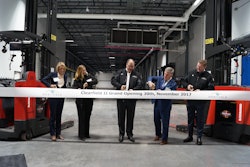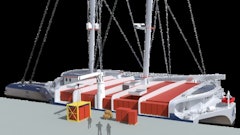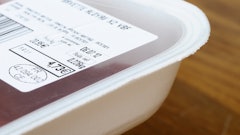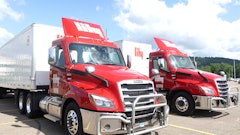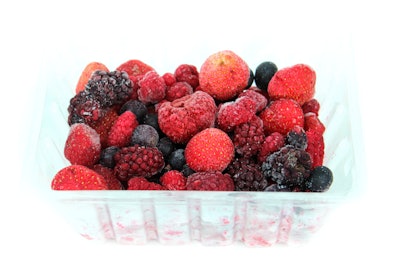
Maintaining temperature control for fruits and vegetables in transit is the most critical factor in assuring successful transport so consumers can enjoy fresh produce at its top condition, flavor and nutritional value.
Yet in the global transport of perishable goods, the cold chain that stretches from point of harvest to point of sale can be thousands of miles long, with many players participating in the process. With each perishable item having its own distinct optimum temperature and tolerance for temperature fluctuations, how can temperature control for quality assurance be maintained? Considering the volume of goods successfully shipped every day, it’s both complicated and a modern marvel.
The cold chain must be an integrated process where all players recognize their own role as well as those of the previous and subsequent players. This is necessary to assure compliance.
Preparations and Precautions
The packing plan is where the cold chain begins. Products need to be cooled as quickly as possible after harvest to remove the heat load accumulated over the many weeks of growing in the field or orchard. Packing plant personnel must process, cool and pack the produce quickly, avoiding delays of even a day. At no point, should there be mixing of cold and warm products.
Before transport, products should be pre-cooled to their minimum safe temperature to ensure all biochemical and physiological processes are slowed down and to guarantee enough potential postharvest life to endure transport and commercialization at destination markets. Most efficient and effective ways to pre-cool fresh produce involve very cold water, forced air or even vacuum, depending on the type of commodity.
The Journey Begins
If produce is loaded into refrigerated containers or trucks using non-refrigerated cross docks or loading stations, the container’s refrigeration system should not be running while loading, as warm air from the surroundings will likely be introduced into the container.
Port personnel, both at origin and destination, and shipping lines need to ensure fresh produce loads are promptly refrigerated at ports and onboard vessels following the recommendations for each type of commodity.
When fresh produce arrives at destination ports, it either goes directly to distribution centers or ripening facilities in the same containers, or it is transferred to refrigerated trucks and then hauled. If produce remains in the container, the container refrigeration system needs to be supported by a generator set to supply electricity during land transport via rail or road. In this segment of the cold chain, products normally travel at the same optimum temperature maintained during shipping from the country of origin.
Keeping it Cool
Up to this stage of the perishable commodity’s journey from farm to fork, the heavy lifting of temperature control has largely been handled by a container refrigeration system, such as a Carrier Transicold PrimeLINE unit. Now, nearing the final destination, the perishables will leave the security of the container and may be subject to unintended breaks in the cold chain as they get closer to the finish line of the consumer’s shopping cart.
Ideally, distribution centers should hold fruits and vegetables at the same optimum temperature at which they were transported. However, distribution centers have limited space for fresh produce, as these centers carry all the goods and products that are distributed to stores and supermarkets. Consequently, distribution centers sometimes cannot maintain all the different temperatures needed for the variety of incoming perishables, and this means many may be warehoused at temperatures far from optimum.
If fresh produce only spends a short time at distribution centers before being dispatched to stores and supermarkets, it may not suffer negative consequences from being kept at temperatures too high or too low. However, if these goods are staged at suboptimal temperatures for even several hours, then deterioration, ripening or chilling injury can be triggered.
After being staged in distribution centers, fresh produce will be dispatched for stores, supermarkets and wholesale markets. When commodities such as dairy, meats and dry goods are mixed with perishables during delivery, sometimes the temperature chosen will be the lowest needed for a particular item, usually between 34 and 40 degrees Fahrenheit. This can have detrimental effects on perishables that prefer higher temperatures—for instance, chilling injury symptoms like peel and pulp discoloration, loss of texture, deterioration and loss of flavor and taste can occur. This can be prevented by avoiding the mixing of goods that need to be kept at significantly different temperatures or by maintaining a temperature better suited to the mix of goods being transported. Another solution is to use multi-compartment delivery trucks equipped with multi-temperature refrigeration systems such as a Carrier Transicold Supra 950MT (multi-temperature) unit, which can maintain two different temperature settings simultaneously.
Fresh on Arrival
Once fresh produce arrives at stores, supermarkets and wholesale markets, it will often be commercialized at warmer than optimal temperatures. Typically, stores and supermarkets maintain ambient temperatures between 68 and 75◦ F for the comfort of shoppers. Unless stores have the space and equipment to create refrigerated storage areas kept at different temperatures, backroom staging of fresh produce tends to range between 50 and 90◦ F, depending on the store and time of year. Wholesale markets typically have either very warm or very cold environments, also depending on the location and time of year.
Fresh produce usually remains on shelves between one and five days before final sale. Managing fresh produce display areas is a constant battle against time and spoilage (over-maturity), where produce managers work to keep shrink levels low. Store personnel must be trained to manage fresh produce rotation on a first-in/first-out basis including careful monitoring and replenishment of items on display in the produce area.
Maintaining and complying with the cold chain is a challenge for all segments handling fresh produce from farm to the consumer point of purchase. Exposing fruits and vegetables to suboptimal warmer or colder temperatures during distribution and commercialization will undermine quality, condition and shelf life potential.
We have technology that is better than ever to maintain temperature compliance. The rest is up to those who manage the distribution process so that consumers can enjoy fruits and vegetables that seem freshly picked, even when the originating farm or orchard is half a world away.
Eduardo Kerbel is the postharvest technology business manager of Global Container Refrigeration at Carrier Transicold. He joined Carrier Transicold Global Container Refrigeration in 2015, building on a 29-year career focused on postharvest business practices for private industry and government and as an educator. Today, he works closely with Carrier Transicold customers, sharing his knowledge and experience to help them advance their success in transporting perishable goods from farm to consumers everywhere.




